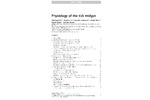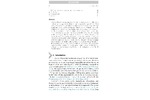Physiology of the tick midgut
Abstract: Ticks are obligate hematophagous ectoparasites that have evolved a highly specialized feeding strategy, enabling them to ingest exceptionally large volumes of host blood, often containing pathogenic microbes. As vectors of numerous infectious agents, ticks have a significant impact on human and animal health worldwide. Central to their success as blood feeders and disease vectors is the midgut—a multifunctional organ that mediates nutrient uptake, immune responses, and interactions with invading pathogens. This chapter reviews the current state of knowledge on the physiology of the tick midgut from both structural (morphological) and functional perspectives, focusing on blood meal processing, heme homeostasis, and innate immunity. In addition, recent advances in omics technologies are presented, which have provided valuable insights into the molecular and microbiological underpinnings of tick midgut function, as well as the role of the midgut microbiota in tick physiology and vector competence. A detailed understanding of these physiological processes is essential for identifying new targets to disrupt tick feeding and pathogen transmission, thereby contributing to the development of effective tick control strategies.
Kopáček P., Lu S., Urbanová V., Šíma R., Sojka D., Perner J. 2025: Physiology of the tick midgut. In: Advances in Insect Physiology 68: 1–64. DOI: 10.1016/bs.aiip.2025.04.002.













